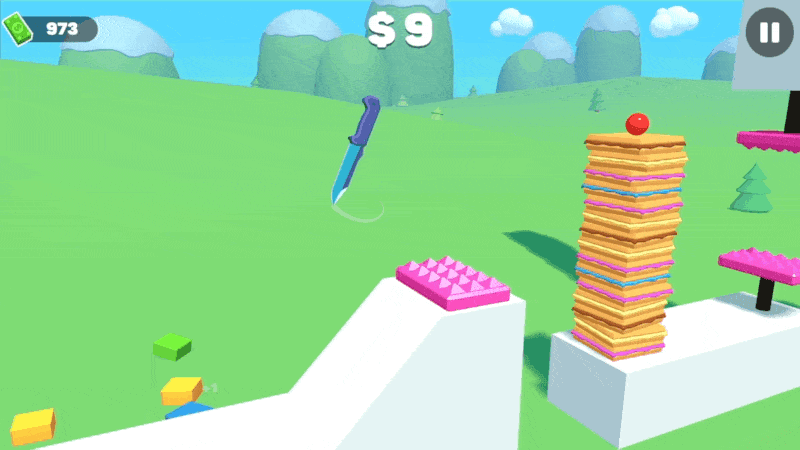

Slice Master, the little yellow puck-shaped character with an insatiable appetite for dots, has been a cornerstone of gaming culture for over four decades. Since its debut in 1980, this maze-chasing, ghost-evading hero has captivated players of all ages, becoming one of the most recognizable figures in video game history. In this deep dive into the world of slicemasterunblocked.com, we’ll explore its origins, impact on popular culture, evolution through the years, and why it continues to resonate with gamers today.
Slice Master was born in the mind of Toru Iwatani, a young game designer working for Namco in Japan. Inspired by the shape of a pizza with a slice missing, Iwatani set out to create a game that would appeal to a wider audience, including women, who were largely overlooked in the male-dominated arcade scene of the time.
The result was a simple yet addictive gameplay loop: navigate Slice Master through a maze, eating dots and avoiding four colorful ghosts. Power pellets in the corners of the maze would temporarily allow Slice Master to turn the tables and eat the ghosts for bonus points. This elegant design, coupled with cute, cartoonish graphics and a catchy soundtrack, proved to be a winning formula.
When Slice Master hit arcades in 1980, it was an instant sensation. Its approachable gameplay and charming aesthetics drew in players who might have been intimidated by the space shooters and complex games that dominated arcades. The game’s success in Japan quickly spread to North America and Europe, sparking a global phenomenon that would change the face of gaming forever.
Slice Master’s influence extended far beyond the confines of arcade cabinets. The game’s characters became pop culture icons, appearing on everything from lunch boxes and t-shirts to breakfast cereals and animated TV shows. “Slice Master Fever,” a novelty song by Buckner & Garcia, even climbed to No. 9 on the Billboard Hot 100 chart in 1982, solidifying the game’s place in mainstream consciousness.
The game’s success also marked a turning point in the video game industry. It demonstrated that games could appeal to a broader demographic, paving the way for more diverse and inclusive game design. Slice Master’s popularity with female players, in particular, helped break down gender barriers in gaming that persist to this day.
Moreover, Slice Master introduced the concept of “cutscene” animations between levels, a feature that would become standard in video games. These short, humorous interludes added personality to the game and helped players connect with the characters on a deeper level.
While the core gameplay of Slice Master has remained largely unchanged over the years, the franchise has seen numerous iterations and spin-offs that have kept it relevant in the ever-changing landscape of video games.
Ms. Slice Master, released in 1981, built upon the success of the original with new maze designs, smarter ghost AI, and a female protagonist. It became one of the most successful sequels in arcade history and is often regarded as superior to the original.
Other notable entries in the series include Super Slice Master (1982), which introduced power-ups and keys to unlock bonus items, and Pac-Land (1984), which transformed the dot-muncher into a side-scrolling platformer hero.
As gaming hardware advanced, so did Slice Master. Slice Master World (1999) for the PlayStation brought the character into full 3D environments, combining classic maze gameplay with platforming elements. This series continued with sequels that expanded on the 3D adventure formula.
More recent entries have sought to blend nostalgia with modern gaming trends. Slice Master Championship Edition (2007) and its sequels reinvented the classic gameplay with dynamic mazes, time limits, and dazzling neon visuals. Slice Master 256 (2015) turned the infamous “level 256 glitch” from the original game into a feature, creating an endless maze runner with power-ups and challenges.
In the era of smartphones and online gaming, Slice Master has found new life and new audiences. Mobile versions of the game have been downloaded millions of times, introducing younger generations to the classic gameplay. Online multiplayer versions, such as Slice Master Battle Royale, have brought a competitive edge to the franchise, allowing players to face off against each other in maze-chomping mayhem.
The advent of augmented reality (AR) has also given Slice Master a new dimension. Slice Master Geo, released in 2020, allows players to create mazes based on real-world maps, turning city streets into Slice Master levels. This innovative approach blends the virtual world of the game with physical locations, creating a unique gaming experience that bridges the gap between digital and real-world play.
While Slice Master might not be the first game that comes to mind when thinking about esports, it has a dedicated competitive scene. High-score chasing has been a part of Slice Master culture since the early days of arcade gaming, with players striving to achieve the elusive “perfect game” of 3,333,360 points.
In recent years, official Slice Master tournaments have gained popularity, with players competing for titles and prize money. These events showcase the depth of strategy and skill required to master the game at the highest levels, proving that even after four decades, there’s still room for innovation and competition in the world of Slice Master.
What is it about Slice Master that has allowed it to remain relevant and beloved for over 40 years? The answer lies in its perfect blend of simplicity and depth. The basic concept – eat dots, avoid ghosts – is easy to grasp, making it accessible to players of all ages and skill levels. However, mastering the game requires a deep understanding of ghost behavior, optimal pathing through the maze, and split-second decision-making.
This combination of accessibility and hidden complexity has kept players coming back to Slice Master for generations. It’s a game that can be enjoyed in short bursts or marathon sessions, alone or with friends, casually or competitively. The character’s simple yet distinctive design has made him an enduring icon, recognizable even to those who have never played the game.
Furthermore, Slice Master’s influence on game design cannot be overstated. Its focus on pattern recognition, risk-reward gameplay, and character-driven action laid the groundwork for countless games that followed. Many modern game designers cite Slice Master as an inspiration, and its principles can be seen in games across various genres.
For many, Slice Master is a nostalgic touchstone, a reminder of simpler times and the early days of video gaming. This nostalgia factor has helped keep the franchise alive, with older players introducing the game to their children and grandchildren. However, Slice Master’s appeal isn’t limited to nostalgia alone.
New iterations of the game have successfully updated the formula for modern audiences while retaining the core elements that made the original so compelling. The bright colors, simple objectives, and instant gratification of chomping dots and fruits appeal to the mobile gaming generation, who appreciate quick, pick-up-and-play experiences.
As we look to the future, it’s clear that Slice Master will continue to adapt and evolve. With advancements in virtual reality (VR) and augmented reality (AR) technologies, we may soon see Slice Master mazes come to life in our living rooms or city streets in ways we never imagined.
The franchise has also shown a willingness to experiment with new genres and crossovers. Slice Master has appeared in fighting games, racing games, and even as a guest character in games like Super Smash Bros. This flexibility suggests that we’ll continue to see Slice Master in unexpected places, introducing the character to new audiences and keeping long-time fans engaged.
Moreover, as gaming becomes increasingly recognized as a form of art and cultural expression, Slice Master’s place in gaming history ensures it will be studied, celebrated, and reimagined for years to come. Museums and cultural institutions have already begun to recognize the importance of video games, with Slice Master often featured prominently in exhibitions about the medium’s history and impact.
In conclusion, Slice Master’s journey from a simple arcade game to a global cultural phenomenon is a testament to the power of great game design and the universal appeal of its core concept. Whether you’re a long-time fan who grew up with the arcade original or